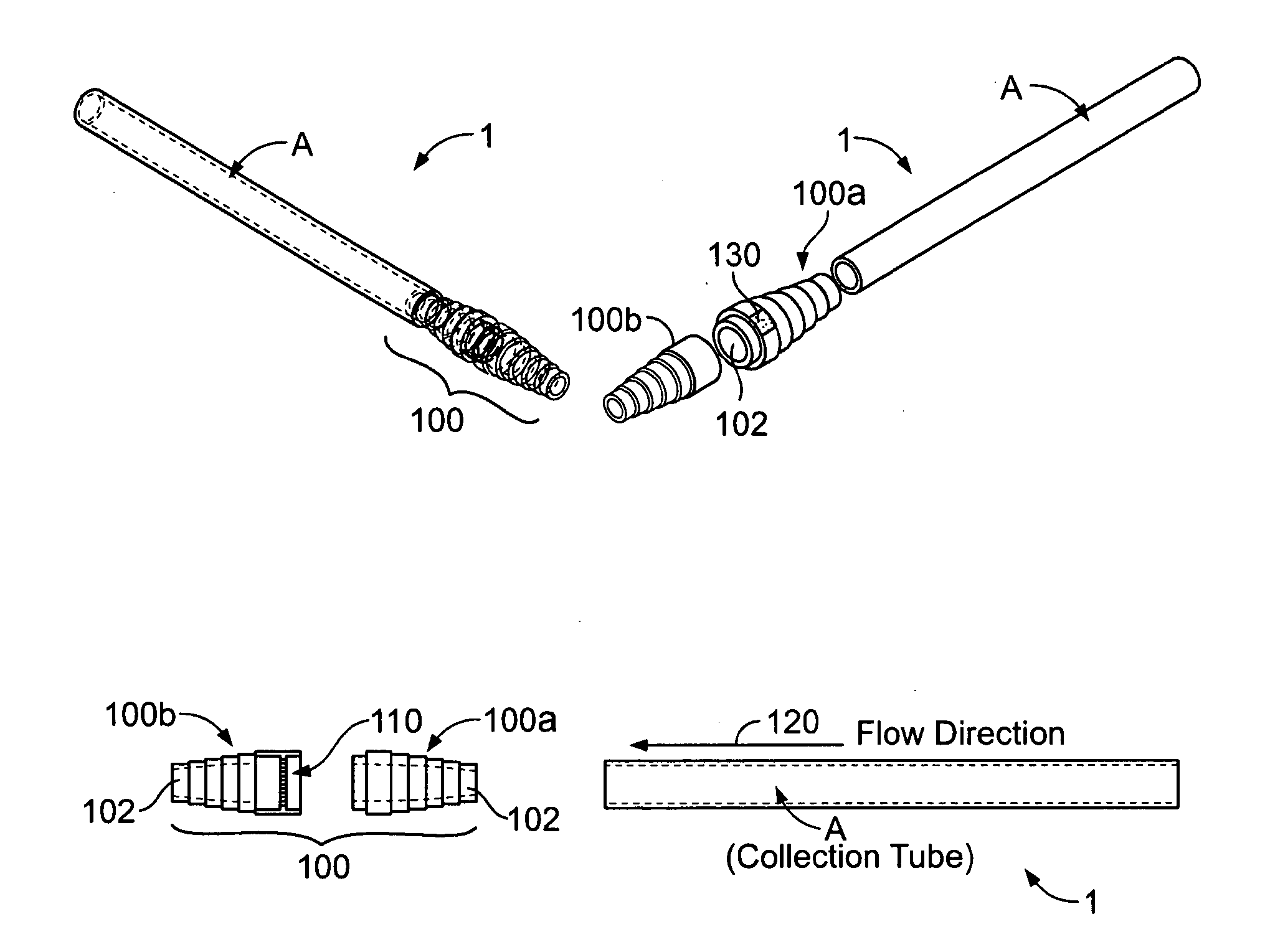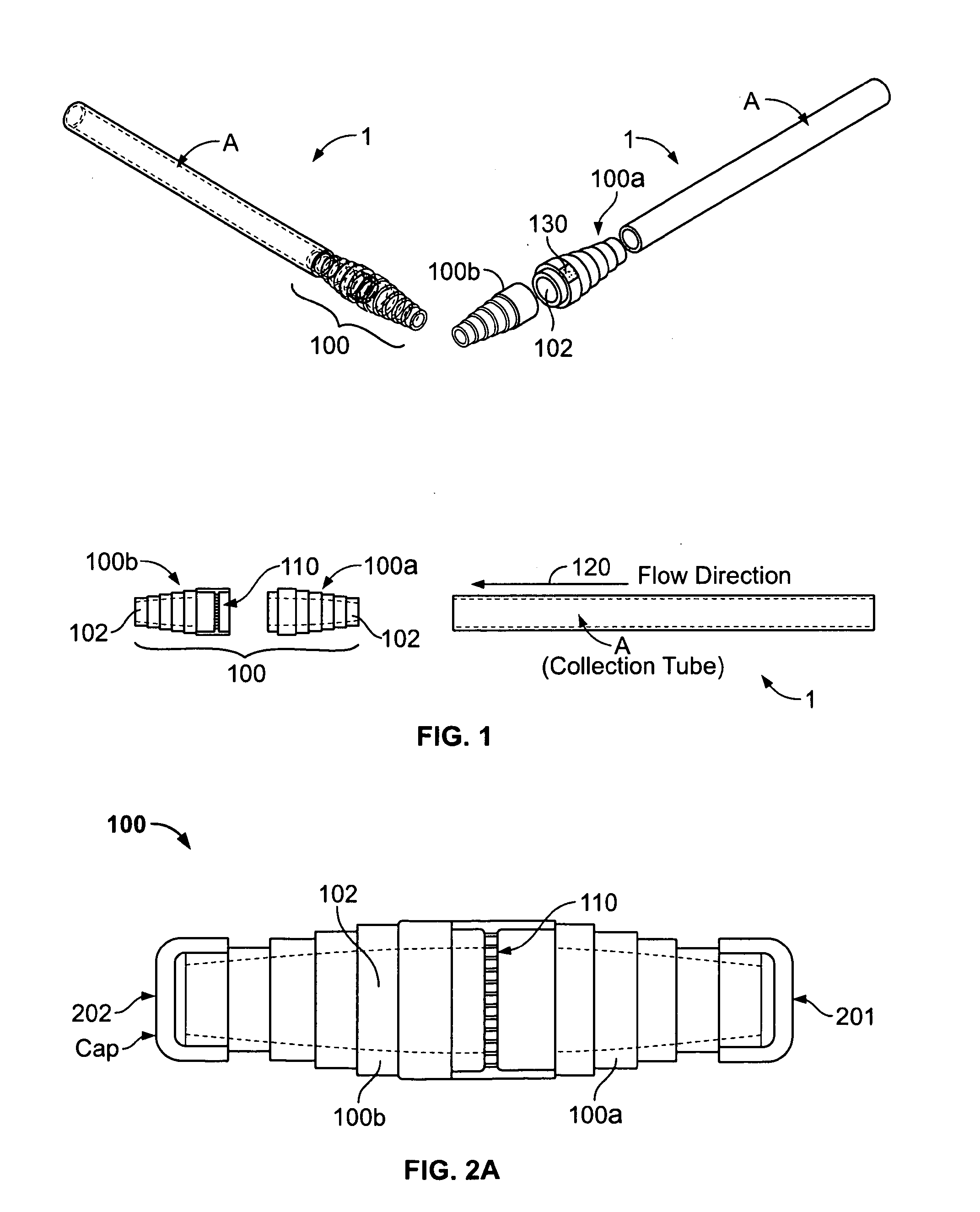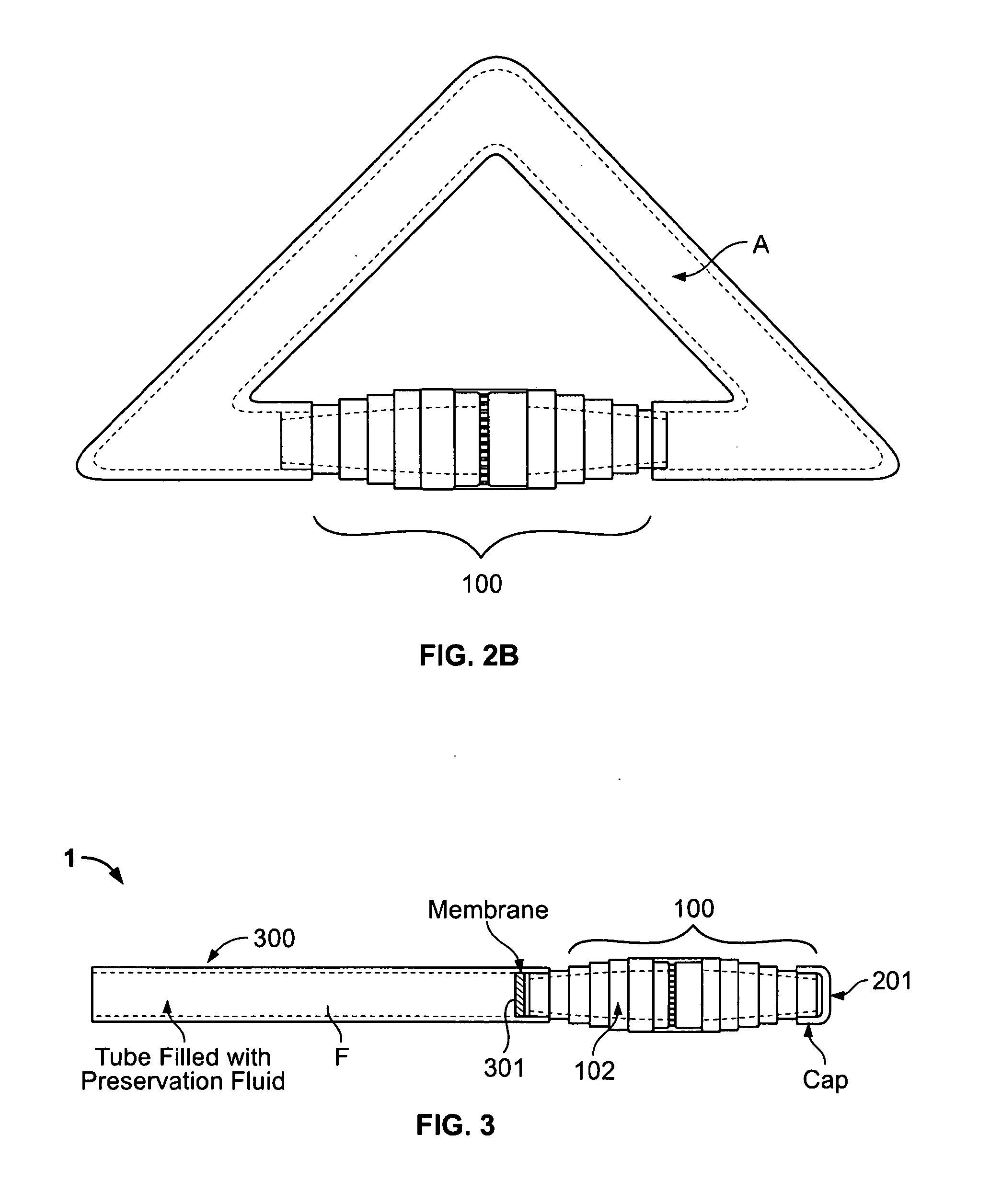System and method for tissue specimen collection
a tissue specimen and system technology, applied in the field of tissue specimen collection, can solve the problems of ineffective separation of inability to effectively separate suction effluent that accompanies tissue specimen from tissue specimen retained, and large volume of potentially contaminating effluent retained in conventional traps, etc., to achieve the effect of quick change and improved effluent separation
- Summary
- Abstract
- Description
- Claims
- Application Information
AI Technical Summary
Benefits of technology
Problems solved by technology
Method used
Image
Examples
Embodiment Construction
[0029]The present inventions now will be described more fully hereinafter with reference to the accompanying drawings, in which some, but not all embodiments of the inventions are shown. Indeed, these inventions may be embodied in many different forms and should not be construed as limited to the embodiments set forth herein; rather, these embodiments are provided so that this disclosure will satisfy applicable legal requirements. Like numbers refer to like elements throughout.
[0030]As shown generally in FIG. 1, one embodiment of the present invention provides a tissue specimen collection system 1 comprising a collection device 100 adapted to be removably and serially engaged between a suction tube B (see FIG. 4) and a collection tube A. For example, in some embodiments, the collection device 100 may be adapted to be removably and serially engaged between an endoscope collection tube A and a suction tube B such that a flow direction 120 is established through the collection device 1...
PUM
 Login to View More
Login to View More Abstract
Description
Claims
Application Information
 Login to View More
Login to View More - R&D
- Intellectual Property
- Life Sciences
- Materials
- Tech Scout
- Unparalleled Data Quality
- Higher Quality Content
- 60% Fewer Hallucinations
Browse by: Latest US Patents, China's latest patents, Technical Efficacy Thesaurus, Application Domain, Technology Topic, Popular Technical Reports.
© 2025 PatSnap. All rights reserved.Legal|Privacy policy|Modern Slavery Act Transparency Statement|Sitemap|About US| Contact US: help@patsnap.com



